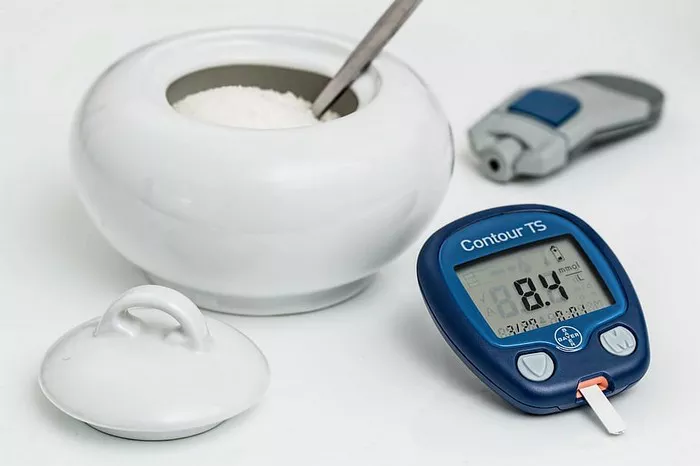Harnessing Nutrition to Manage and Improve Glycemic Control
Managing diabetes effectively involves a multi-faceted approach, with diet playing a crucial role. Hemoglobin A1C (HbA1c) is a key indicator of long-term blood glucose control, reflecting average blood sugar levels over the past two to three months. Achieving and maintaining target HbA1c levels is essential to prevent diabetes-related complications. Here, we explore foods and dietary strategies that can help lower HbA1c levels.
Understanding HbA1c and Its Importance
Hemoglobin A1C (HbA1c) is a form of hemoglobin that is chemically linked to glucose. Measuring HbA1c provides a picture of average blood glucose levels over a period, offering a broader view compared to daily blood glucose tests. The American Diabetes Association (ADA) recommends an HbA1c goal of less than 7% for most adults with diabetes, though individualized targets may vary.
The Role of Diet in Managing HbA1c
Diet is fundamental in managing diabetes. The right food choices can help regulate blood sugar levels, thereby improving HbA1c. Here’s a detailed look at specific foods and dietary patterns that can aid in lowering HbA1c.
Low-Glycemic Index Foods
The glycemic index (GI) measures how quickly foods raise blood sugar levels. Foods with a low GI are digested and absorbed more slowly, leading to a gradual rise in blood glucose and insulin levels. Incorporating low-GI foods into your diet can help maintain stable blood sugar levels and improve HbA1c.
Examples of Low-GI Foods
- Non-Starchy Vegetables: Vegetables like broccoli, spinach, kale, and bell peppers are low in carbohydrates and rich in fiber. They can be eaten in large quantities without significantly impacting blood sugar levels.
- Whole Grains: Foods like oatmeal, barley, and quinoa have a lower GI compared to refined grains. They provide sustained energy and help control blood sugar spikes.
- Legumes: Beans, lentils, and chickpeas are excellent sources of protein and fiber, with a low GI, making them ideal for blood sugar management.
- Fruits: Berries, apples, and pears have a lower GI compared to tropical fruits like bananas and mangoes. These fruits provide essential vitamins and fiber without causing sharp blood sugar spikes.
- Nuts and Seeds: Almonds, walnuts, chia seeds, and flaxseeds have a minimal impact on blood sugar levels and are rich in healthy fats and protein.
High-Fiber Foods
Dietary fiber, particularly soluble fiber, slows down the digestion and absorption of carbohydrates, leading to a more gradual increase in blood glucose levels. High-fiber diets have been shown to improve glycemic control and reduce HbA1c.
Fiber-Rich Foods to Include
- Vegetables: In addition to their low GI, vegetables are packed with fiber. Aim to fill half your plate with non-starchy vegetables at each meal.
- Fruits: Opt for whole fruits rather than fruit juices to maximize fiber intake. Berries, apples, and oranges are particularly high in fiber.
- Whole Grains: Brown rice, whole wheat bread, and oatmeal are not only lower in GI but also rich in fiber.
- Legumes: Beans, lentils, and chickpeas provide both protein and fiber, making them a valuable addition to a diabetes-friendly diet.
- Nuts and Seeds: These are excellent sources of both soluble and insoluble fiber. Incorporate a small handful of nuts or seeds into snacks and meals.
Healthy Fats
Replacing saturated and trans fats with healthy fats can improve insulin sensitivity and reduce inflammation, which is beneficial for managing blood glucose levels.
Sources of Healthy Fats
- Avocado: Rich in monounsaturated fats, avocados can help improve cholesterol levels and reduce blood sugar spikes.
- Nuts and Seeds: In addition to fiber, nuts and seeds are packed with healthy fats. Almonds, walnuts, chia seeds, and flaxseeds are excellent choices.
- Olive Oil: A staple of the Mediterranean diet, olive oil is rich in monounsaturated fats and has been associated with improved glycemic control.
- Fatty Fish: Salmon, mackerel, sardines, and other fatty fish are high in omega-3 fatty acids, which can help reduce inflammation and improve heart health.
- Dark Chocolate: In moderation, dark chocolate with a high cocoa content can provide antioxidants and healthy fats without significantly impacting blood sugar.
Protein-Rich Foods
Including adequate protein in your diet can help stabilize blood sugar levels by slowing carbohydrate absorption and reducing post-meal blood sugar spikes.
Best Protein Sources
- Lean Meats: Chicken, turkey, and lean cuts of beef and pork provide high-quality protein without excessive saturated fat.
- Fish and Seafood: In addition to fatty fish, other seafood like shrimp and scallops are excellent protein sources.
- Eggs: Eggs are versatile and provide high-quality protein and essential nutrients.
- Dairy: Low-fat or Greek yogurt, cottage cheese, and milk can be good sources of protein and calcium, but opt for unsweetened versions to avoid added sugars.
- Plant-Based Proteins: Tofu, tempeh, and edamame are excellent sources of plant-based protein and can be incorporated into a variety of dishes.
Probiotic Foods
Emerging research suggests that gut health plays a role in glucose metabolism. Probiotic foods, which contain beneficial bacteria, can support a healthy gut microbiome and potentially improve glycemic control.
Probiotic-Rich Foods
- Yogurt: Choose unsweetened yogurt with live active cultures for a probiotic boost.
- Kefir: This fermented milk drink is rich in probiotics and can be used in smoothies or as a beverage.
- Sauerkraut: Fermented cabbage provides probiotics and can be added to salads and sandwiches.
- Kimchi: A spicy Korean fermented vegetable dish that can add flavor and probiotics to meals.
- Kombucha: This fermented tea drink is another way to introduce probiotics into your diet, but choose low-sugar varieties.
Balanced Meal Planning
Creating balanced meals that incorporate a variety of these beneficial foods can help you maintain stable blood sugar levels throughout the day. Here are some tips for balanced meal planning:
Plate Method
- Half Plate Vegetables: Fill half your plate with non-starchy vegetables like spinach, broccoli, bell peppers, and tomatoes.
- Quarter Plate Protein: Allocate a quarter of your plate to lean protein sources like chicken, fish, tofu, or legumes.
- Quarter Plate Whole Grains: The remaining quarter can include whole grains or starchy vegetables like brown rice, quinoa, or sweet potatoes.
- Healthy Fats: Add a small amount of healthy fats, such as avocado, olive oil, or nuts.
Meal Timing and Frequency
- Regular Meals: Eating at regular intervals can help maintain steady blood sugar levels. Avoid skipping meals, which can lead to blood sugar spikes and dips.
- Balanced Snacks: Include balanced snacks with a combination of protein, fiber, and healthy fats to prevent blood sugar fluctuations. Examples include apple slices with almond butter or Greek yogurt with berries.
Specific Foods to Focus On
Leafy Greens
Leafy greens like spinach, kale, and Swiss chard are nutrient-dense and have a minimal impact on blood sugar levels. They are high in vitamins, minerals, and antioxidants, which can help combat inflammation and oxidative stress associated with diabetes.
Berries
Berries such as blueberries, strawberries, and raspberries are lower in sugar compared to other fruits and are packed with fiber, vitamins, and antioxidants. They can satisfy sweet cravings without causing significant blood sugar spikes.
Chia Seeds
Chia seeds are a powerhouse of fiber, omega-3 fatty acids, and protein. They can help stabilize blood sugar levels and improve satiety. Add chia seeds to smoothies, yogurt, or make chia pudding for a nutritious snack.
Cinnamon
Cinnamon has been shown to improve insulin sensitivity and lower blood sugar levels. Incorporate cinnamon into your diet by adding it to oatmeal, smoothies, or baking.
Apple Cider Vinegar
Apple cider vinegar can improve insulin sensitivity and lower blood sugar levels after meals. Dilute a tablespoon of apple cider vinegar in a glass of water and drink it before meals, or use it as a salad dressing.
Garlic
Garlic has been shown to have potential blood sugar-lowering effects. It can be added to a variety of dishes, including soups, stews, and sauces, to enhance flavor and provide health benefits.
Green Tea
Green tea contains antioxidants that can help improve insulin sensitivity and reduce blood sugar levels. Drinking green tea regularly can be a beneficial addition to a diabetes-friendly diet.
Dietary Patterns for Lowering HbA1c
Mediterranean Diet
The Mediterranean diet emphasizes whole, unprocessed foods, including fruits, vegetables, whole grains, nuts, seeds, and healthy fats like olive oil. This dietary pattern has been associated with improved glycemic control and reduced HbA1c levels.
DASH Diet
The Dietary Approaches to Stop Hypertension (DASH) diet focuses on fruits, vegetables, whole grains, lean proteins, and low-fat dairy while limiting sodium, added sugars, and saturated fats. It has been shown to improve insulin sensitivity and lower blood pressure, which is beneficial for individuals with diabetes.
Plant-Based Diets
Plant-based diets, which emphasize fruits, vegetables, whole grains, legumes, nuts, and seeds, have been associated with improved glycemic control and reduced risk of diabetes-related complications. They are naturally high in fiber and low in unhealthy fats.
Low-Carbohydrate Diets
Low-carbohydrate diets can help reduce blood sugar levels and improve HbA1c by limiting carbohydrate intake and focusing on protein and healthy fats. However, it is important to choose healthy, nutrient-dense foods rather than relying on processed low-carb products.
Practical Tips for Implementing Dietary Changes
Start Small
Making significant dietary changes can be overwhelming. Start by incorporating one or two new foods or habits at a time. Gradually build on these changes to create a sustainable eating pattern.
Plan Ahead
Planning meals and snacks in advance can help you make healthier choices and avoid last-minute decisions that may not align with your dietary goals. Consider batch cooking or preparing ingredients ahead of time.
Stay Hydrated
Proper hydration is important for overall health and can help with blood sugar management. Aim to drink plenty of water throughout the day and limit sugary beverages.
Monitor Your Progress
Keep track of your food intake, blood sugar levels, and HbA1c to understand how different foods and habits affect your diabetes management. This can help you make informed decisions and adjustments as needed.
Seek Support
Working with a registered dietitian or diabetes educator can provide personalized guidance and support. They can help you create a meal plan that meets your nutritional needs and fits your lifestyle.
Conclusion
Managing diabetes and lowering HbA1c levels involves a holistic approach that includes a balanced diet rich in low-GI foods, fiber, healthy fats, and protein. By focusing on nutrient-dense, whole foods and incorporating specific dietary patterns like the Mediterranean or plant-based diets, individuals with diabetes can improve their glycemic control and overall health. Implementing these dietary strategies, along with regular monitoring and professional support, can lead to significant improvements in HbA1c and a better quality of life.
Related topics:
Being a diabetic what should I eat?

























